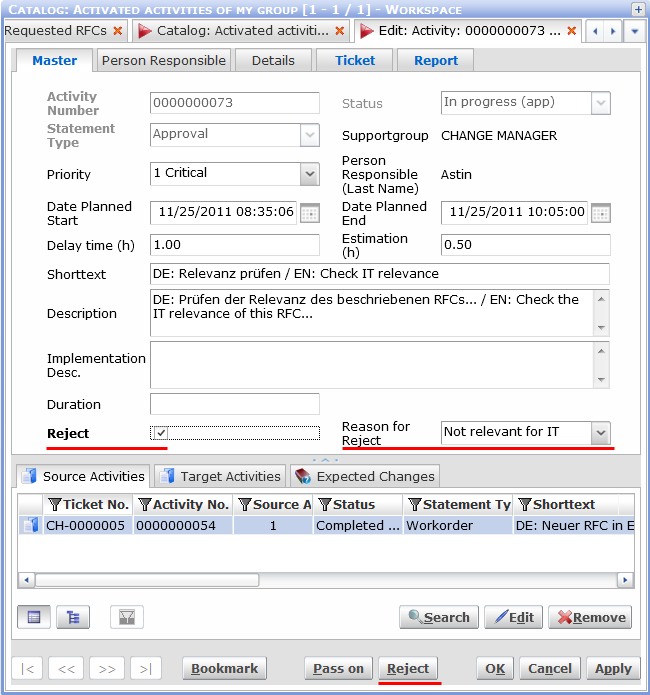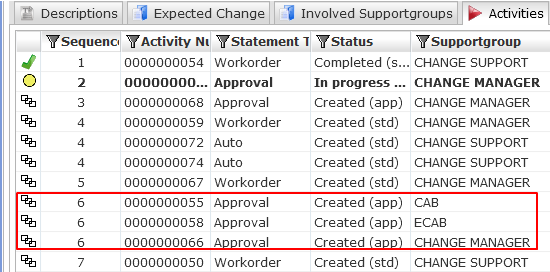Reject RFC
All handling of a change ticket is done with the use of activities. Thus also rejecting an RFC is done on the level of its activities. If an activity belonging to an RFC is rejected, then the subsequent RFC activities cannot be activated and the whole RFC gets rejected.
Rejection is done by activity of 'Approval' Statement Type.
- On the Master tab of activity editor, tick the Reject check box.
- Use the Reason for Reject field to specify the reason for rejection (e.g. 'Not relevant for IT', 'CAB not approved', 'Specification not ok', etc.).
- Click the Reject button at the bottom of the editor to reject the activity.

Rejection/Approval dependence on functional roles and service parameter:
- Change Impact Minor - Change manager can approve/reject the change
- Change Impact Medium and Major - CAB can approve/reject the change
An emergency change can be approved/rejected by ECAB.
In the change ticket, the approval is handled as parallel activities where the appropriate activity is triggered when corresponding conditions are met.

The fact that a change has been approved or rejected (i.e. change authorisation) is directly indicated by its status. Additionally, the entire progress of the change ticket processing, including approval and rejection, is documented by individual descriptions in the Descriptions tab of the change ticket editor.

In this image, descriptions 10 and 11 indicate that the ticket was revised successfully and thus is ready for the next step - evaluation.